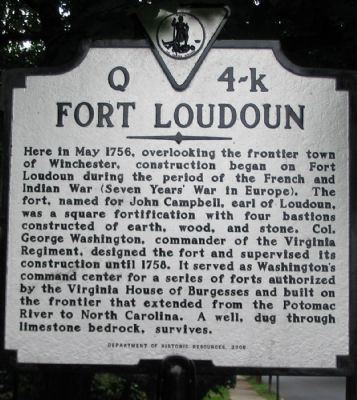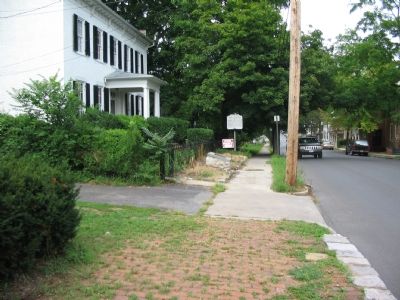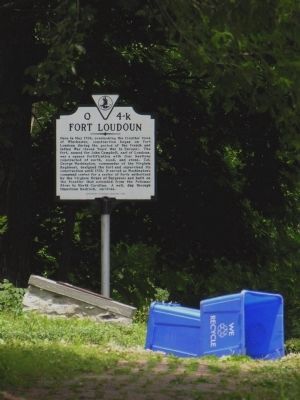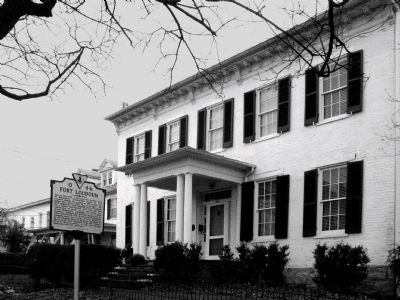Winchester, Virginia — The American South (Mid-Atlantic)
Fort Loudoun
Erected 2006 by Department of Historic Resources. (Marker Number Q 4-k.)
Topics and series. This historical marker is listed in these topic lists: Colonial Era • Forts and Castles • War, French and Indian. In addition, it is included in the Virginia Department of Historic Resources (DHR) series list. A significant historical month for this entry is May 1756.
Location. 39° 11.341′ N, 78° 9.833′ W. Marker is in Winchester, Virginia. Marker is at the intersection of Loudoun Street and Peyton Street, on the right when traveling south on Loudoun Street. About 200 feet north of the intersection of Peyton and Loudoun Streets. Touch for map. Marker is at or near this postal address: 419 Loudoun Street, Winchester VA 22601, United States of America. Touch for directions.
Other nearby markers. At least 10 other markers are within walking distance of this marker. A different marker also named Fort Loudoun (a few steps from this marker); Washington's Well (a few steps from this marker); Site of Fort Loudoun (within shouting distance of this marker); Jackson’s Headquarters (about 400 feet away, measured in a direct line); a different marker also named Jackson’s Headquarters (about 500 feet away); Dangerous Liaison (about 700 feet away); George Washington Lot (approx. 0.2 miles away); John Kirby, Jazz Musician (approx. 0.2 miles away); Spottswood Poles (approx. 0.2 miles away); Handley Library (approx. 0.2 miles away). Touch for a list and map of all markers in Winchester.
Related markers. Click here for a list of markers that are related to this marker. To better understand the relationship, study each marker in the order shown.
Also see . . . Fort Loudoun - One of Washington's Forts. Includes photographs of the well mentioned on the marker. (Submitted on September 23, 2007, by Craig Swain of Leesburg, Virginia.)
Additional commentary.
1. Fort Loudoun - A Popular Name
The name Loudoun
was applied to several frontier forts during the colonial era. Confusing to the present day historian, there are forts named after the Earl of Loudoun in Tennessee, Pennsylvania, and North Carolina.
— Submitted September 23, 2007, by Craig Swain of Leesburg, Virginia.
Credits. This page was last revised on June 16, 2016. It was originally submitted on September 23, 2007, by Craig Swain of Leesburg, Virginia. This page has been viewed 2,288 times since then and 27 times this year. Photos: 1, 2. submitted on September 23, 2007, by Craig Swain of Leesburg, Virginia. 3, 4. submitted on May 9, 2014, by Allen C. Browne of Silver Spring, Maryland. • J. J. Prats was the editor who published this page.



